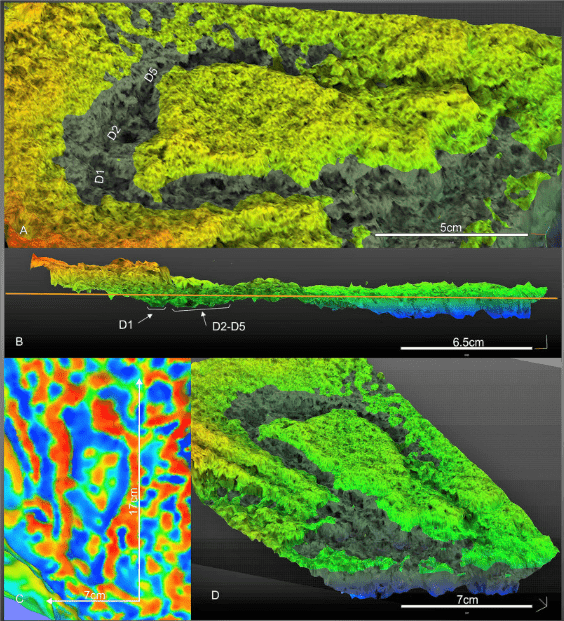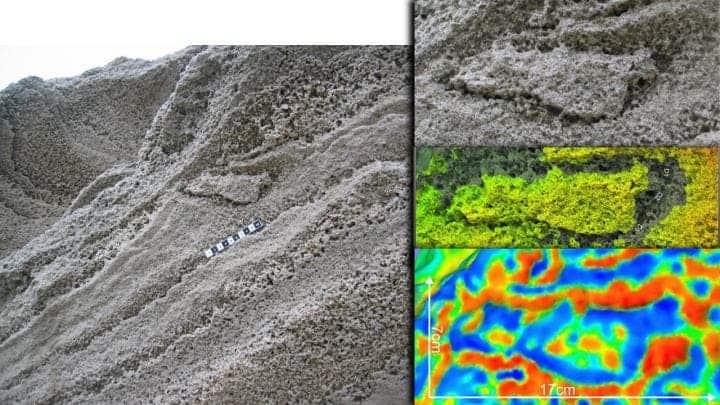Using an optical technique, researchers have identified numerous mammal footprints in Gibraltar — including one that seems to come from a Neanderthal.
“In this work we present the first record of fossil footprints of terrestrial mammals in the Late Pleistocene coastal aeolian deposits of Gibraltar (southern Iberian Peninsula),” researchers write.
For the past 10 years, researchers from Gibraltar, Spain, Portugal, and Japan have been analyzing aeolianites — rocks formed by the solidifying of sediment deposited by aeolian processes (that is, wind). Most such rocks come from coastal limestones, just like is the case in Gibraltar.
The Gibraltar aeolianites are riddled with footprints from vertebrates that used to inhabit the area some 28-31,000 years ago. The footprints correspond to Red Deer, Ibex, Aurochs, Leopard and Straight-tusked Elephant — iconic mammal megafauna that lives alongside early humans. In a new study, researchers describe what they believe to be the footprint of another mammal that inhabited the area: Neanderthals.

A 3D model of the single track described as Hominipes isp. seen from different angles. A and D. Different oblique views of the microtopographic representation of the track with false colors (hot colors represent higher areas, cold colors the lower areas and the dark ones correspond to the printed horizon). Image credits: Muñiz et al.
Of course, much of the sediment in and around the footprint has been eroded, and it’s not clearly visible to the naked eye. So the team used a technique called Optically stimulated luminescence (OSL) to date the footprint and get a better view of it. OSL is somewhat analogous to radiocarbon dating, the main difference being that radiocarbon dating is used to date organic materials, while OSL is used to date minerals.
The Neanderthals in Gibraltar are well known, being among the first to be discovered by modern scientists. They’ve been thoroughly studied, and most anthropologists believe that the Iberian Peninsula and Gibraltar acted as a “refuge” for the shrinking Neanderthal populations in the area.
If the footprint is confirmed to be Neanderthal, it would only be the second one in the world, the other being Vartop Cave in Romania. There are rare documented examples of human footprints in coastal aeolianites, but Neanderthal footprints have turned out to be much more elusive.
Researchers hope that this can be another piece of the puzzle that allows us to understand these close relatives of ours, their culture, and ultimately — what led to their demise. In a way, though, Neanderthals still live through us: it is suggested that 20 percent of Neanderthal DNA survived in modern humans, notably expressed in the skin, hair, and diseases of modern people.
Journal Reference: Fernando Muñiz et al. Following the last Neanderthals: Mammal tracks in Late Pleistocene coastal dunes of Gibraltar (S Iberian Peninsula). Quaternary Science Reviews, 2019; DOI: 10.1016/j.quascirev.2019.01.013










